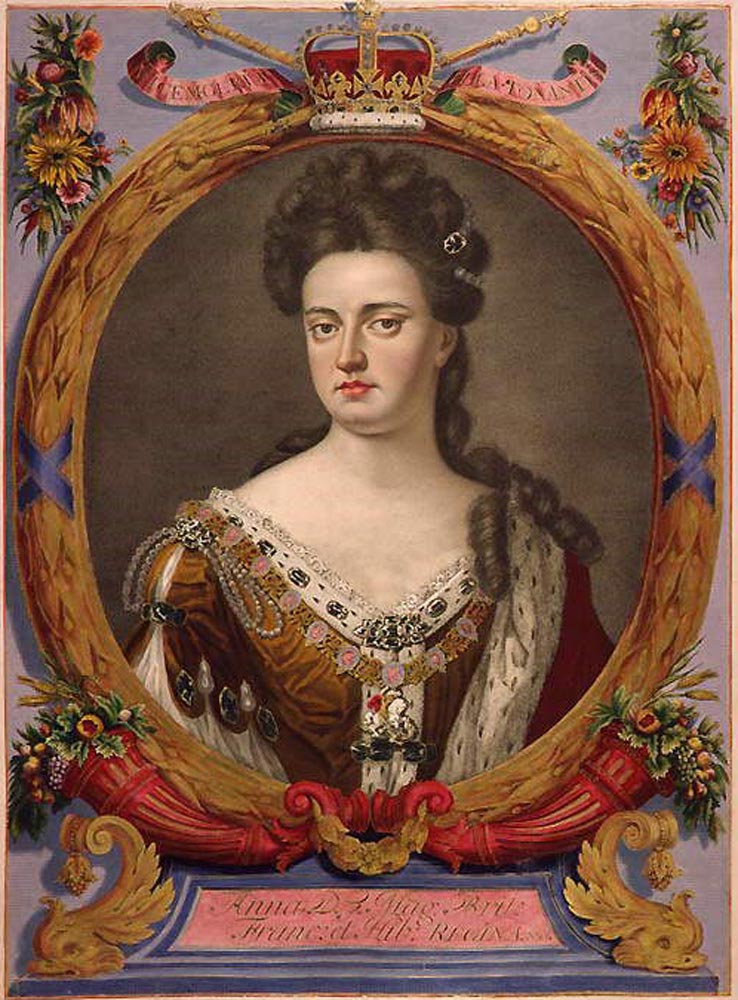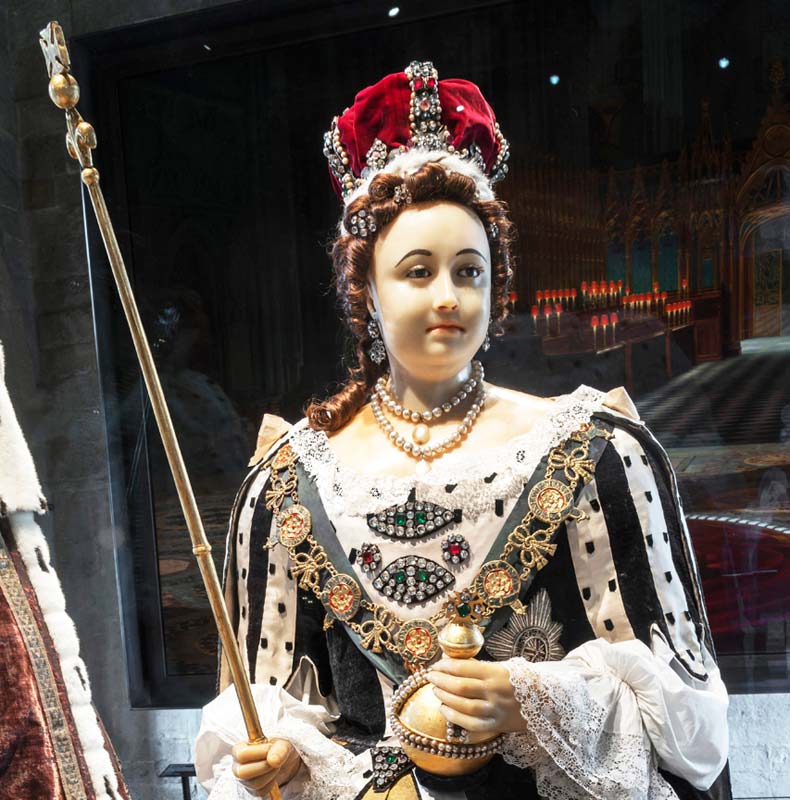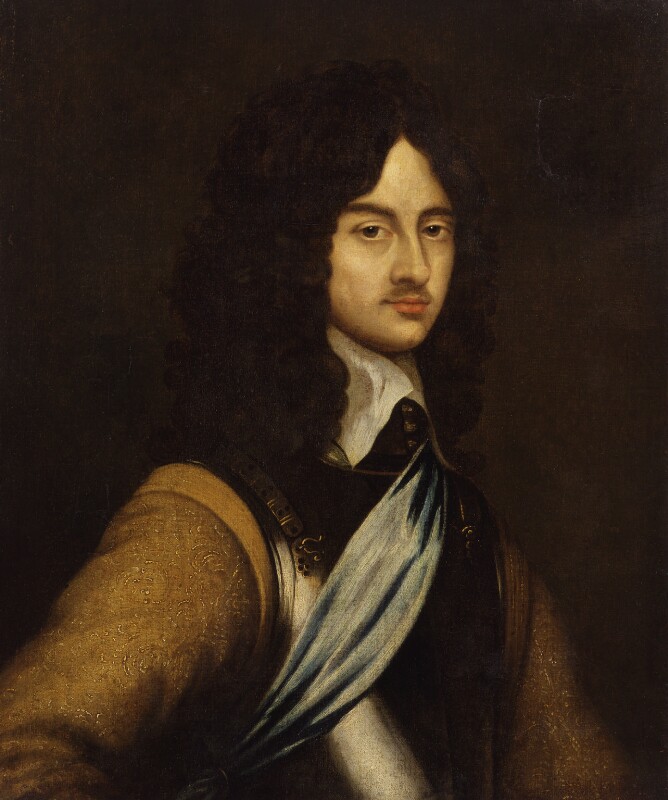Queen Anne
Queen Anne, second daughter of King James II by his first wife Lady Anne Hyde (1637-1671), was born at St James's Palace in London on 6th February 1665. Her sister Mary and her husband William of Orange ascended the throne in 1689 (as Mary II and William III) when the Catholic James II fled the country and abdicated. Her reign is remembered for the Union of England with Scotland in 1707, and the Duke of Marlborough's victories in Europe, as well as for the establishment of the General Post Office, the first daily newspaper and Queen Anne's Bounty, a fund set up to aid poor clergymen.
Marriage
She married Prince George of Denmark (1653-1708), youngest son of Frederick III, King of Denmark and his wife Sophia, at Whitehall on 28th July 1683. Only five of their eighteen children were born alive and none reached maturity.
Coronation
As Mary and William had no children Anne then succeeded to the throne on William III's death and was crowned in the Abbey on 23rd April 1702. She was suffering from gout (being fond of brandy) and had to be carried into the Church by Yeomen of the Guard on an open chair as she was unable to walk.
Burial
She died at Kensington Palace in London on 1st August 1714 and was buried on 24th August in a large coffin next to her husband in the Stuart vault, under the floor at the east end of the south aisle of Henry VII's chapel. Some burial sentences set by William Croft were sung. Hers is the earliest royal funeral for which a topical anthem is known - again by Croft The Souls of the Righteous. There was no room within the chapel to erect a monument to her. Only small stones over the vault mark the graves of her and Prince George.
Her mother Anne lies in a vault nearby. Her sons William, Duke of Gloucester (1689-1700) and infant George and infant daughters Anne Sophia and two named Mary also lie in the vault, together with six still borns. A further six children, gender unknown, were also still borns or miscarriages. A still born son was buried at St George's chapel Windsor. A 19th century vault stone in the central floor of the south aisle of the Lady Chapel includes a short inscription for William.
Wax Effigy
A wax effigy head and hands of the Queen was purchased by the Abbey shortly after her death. This would imply that an effigy was to be placed near her grave but this did not happen and it was not set up until 1740 when a costume was bought for it to allow it to be displayed with other wax figures. It resembles her sister Mary and is thought to be an accurate portrayal of Anne in her forties. It is the only seated wax effigy in the Abbey collection. She wears the collar of the Order of the Garter and holds an orb and sceptre. The petticoat panel is of English yellow silk brocaded with a pattern of flowers. It can be seen in the new Queen's Diamond Jubilee Galleries.
Prince George of Denmark
He died of complications due to his asthma. His chaplain John Tribbeko preached the funeral sermon. The Latin inscription on his coffin plate can be translated:
The remains of the most illustrious and exalted Prince George, Hereditary Prince of Denmark and Norway and of the Goths and Vandals, Duke of Schleswig-Holstein, Storman, Dithmarschen, and Cumberland; Earl of Oldenburgh, Delmenhorst, and Kendal; and Baron Wokingham; the only brother of the most serene and puissant Christian, the fifth of that name, lately King of Denmark and Norway etc; most beloved husband of the most serene and excellent prince Anne, by the grace of God Queen of Great Britain, France and Ireland, Defender of the Faith etc.; Supreme Prefect of all the armies of the Queen both by land and sea, Lord High Admiral of Great Britain and Ireland, Governor of the royal castle of Dover, Warden of the Cinque Ports, Privy Councillor of the Queen's Majesty, Knight of the Most Royal Order of the Garter. Born at Copenhagen, capital of Denmark, on 2nd of April 1653, he died at Kensington on 28th October 1708 aged 56.
Further reading
Oxford Dictionary of National Biography, 2004 (for Anne and George)
Queen Anne by Edward Gregg, 1980
The funeral effigies of Westminster Abbey by A. Harvey and R. Mortimer, 2003 revised edition
British Royal and State funerals.... by M. Range, 2016
The ceremonial for the interment of Anne is Westminster Abbey Muniment 6475*.

[Public domain] via Wikimedia Commons

This image can be purchased from Westminster Abbey Library
Image © 2024 Dean and Chapter of Westminster

This image can be purchased from Westminster Abbey Library
Image © 2024 Dean and Chapter of Westminster

This image can be purchased from Westminster Abbey Library
Image © 2024 Dean and Chapter of Westminster

This image can be purchased from Westminster Abbey Library
Image © 2024 Dean and Chapter of Westminster










